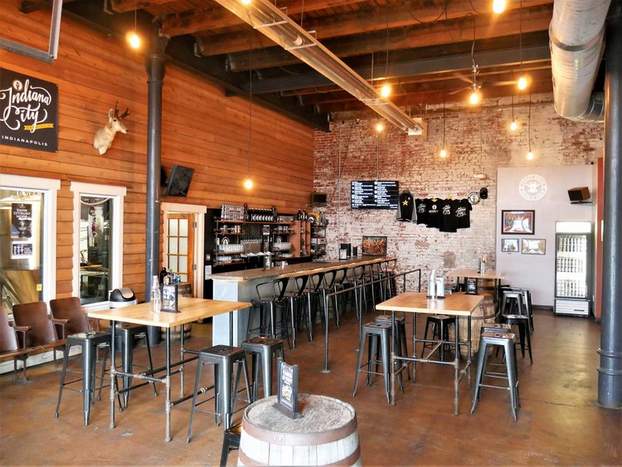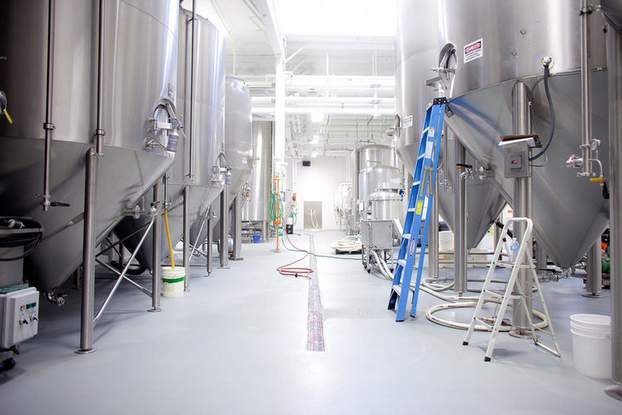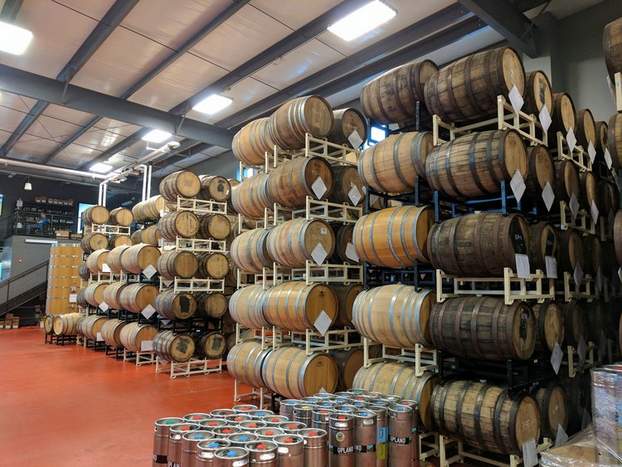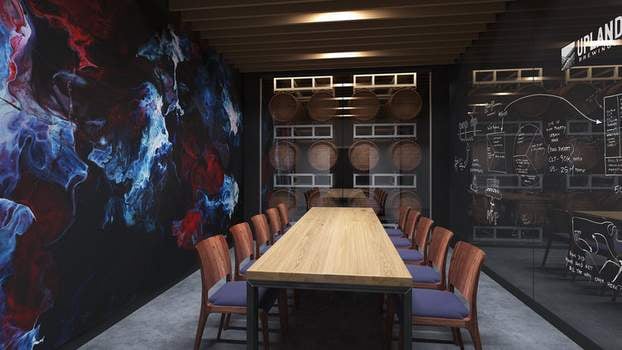
The following was originally published on the DKGR website after they designed a brewery and taproom for Upland Brewing in Fountain Square (Indianapolis). Thanks to the DKGR team for being smarter than us and willing to share.
Any brewery taproom will have space for patrons and beer: countertop bars, taps, restaurant dining rooms, private tasting rooms, open beer halls, private event or banquet halls and/or entertainment areas. Depending on your brand and facility capabilities, there may be an outdoor beer garden or the taproom may accommodate brewery tours. There will be restrooms, storage and may be employee break, conference, office, kitchen and wait staff space. Classifying the various programmed spaces allows us to determine occupancies, required separations and occupant loads.
If you’re looking to design a new brewery taproom, distillery, restaurant or renovate your existing facility, here’s where to start.
Define the program and establish occupancy classifications
As the program is defined, we are able to determine the Occupancy Classifications. Projects in Indiana are governed by the 2014 Indiana Building Code (IBC) which is comprised of the 2012 International Building Code.
Brewery taprooms may have a few assembly spaces: Assembly occupancy is defined by the IBC as:
“The use of a building or structure, or a portion thereof, for the gathering of persons for purposes such as civic, social or religious functions; recreation, food or drink consumption or awaiting transportation.”
For taprooms, this is typically Assembly Group A-2:
“Assembly uses intended for food and/or drink consumption including, but not limited to: Banquet halls, Casinos (gaming areas), Nightclubs, Restaurants, cafeterias and similar dining facilities (including associated commercial kitchens), Taverns and bars”
At Upland Fountain Square in Indianapolis, we designed a large beer cooler (almost 400 sq ft) at the core of the assembly space — front and rear bar areas and two outdoor service windows surround the cooler, which facilitates keg storage, taplines, merchandising and service doors, tap menus, television mounting and glassware shelving.

In Indiana, restaurants that allow minors and serve beer must separate those areas as part of 905 IAC 1-41-2 Separation of rooms: “The separation of the bar area from the dining area, where minors may be served, may be a structure or barrier that reasonably deters free access and egress without requirement for doors or gates.” There are additional food sale minimum requirements to allow for the separation.

If brewing is done on premises, the brewhouse may be classified as Low-Hazard Factory, F-2:
“Factory industrial uses that involve the fabrication or manufacturing of noncombustible materials which during finishing, packing or processing do not involve a significant fire hazard shall be classified as F-2 occupancies and shall include, but not be limited to, the following: Beverages: up to and including 16-percent alcohol content”

There may be a retail area selling brewery-branded merchandise, depending on the size of that area it may be classified as Mercantile, M:
“The use of a building or structure or a portion thereof, for the display and sale of merchandise and involves stocks of goods, wares or merchandise incidental to such purposes and accessible to the public.”
Barrel-aging may be a part of the brewing program, barrel storage possibly requiring Low-Hazard Storage, S classification:
“The use of a building or structure, or a portion thereof, for storage that is not classified as a hazardous occupancy … Includes, among others, buildings used for the storage of noncombustible materials such as products on wood pallets or in paper cartons with or without single thickness divisions; or in paper wrappings.”

Barrel storage at breweries is often S-2 for storage of “Beverages up to and including 16-percent alcohol in metal, glass or ceramic containers”
Depending on the height of the barrels/racks, high pile storage requirements could be in place.
There are often administrative office or employee areas that may be classified as Business Group B occupancy: “The use of a building or structure, or a portion thereof, for office, professional or service-type transactions, including storage of records and accounts.”

Some breweries, such as the BrewDog DogHouse in Columbus have incorporated hotel rooms (and museum space) into their campuses, potentially requiring a Residential Group R classification for: “The use of a building or structure, or a portion thereof, for sleeping purposes when not classified as an Institutional Group I or when not regulated by the International Residential Code.”
Occupancy classification plays a key part in organizing and prescribing the appropriate protection measures. As such, threshold requirements for fire protection and means of egress systems are based on occupancy classification.
Jerome Daksiewicz is the director of design at DKGR.






Leave a Reply
You must be logged in to post a comment.